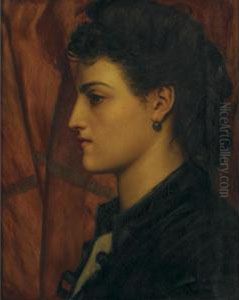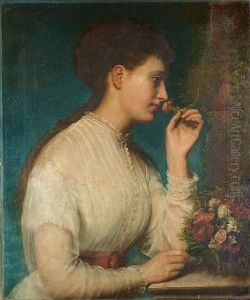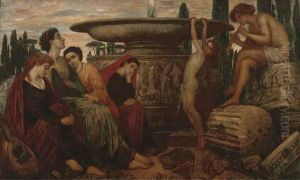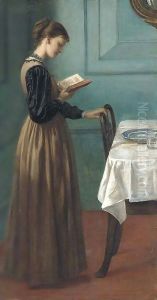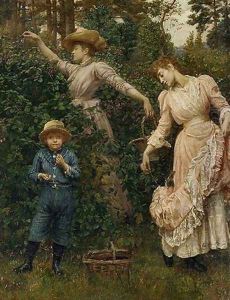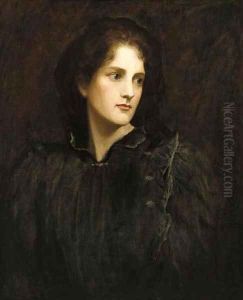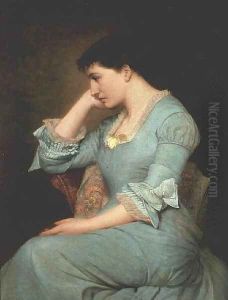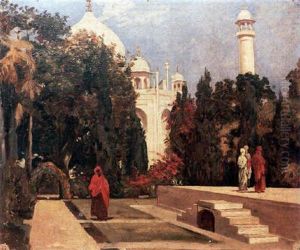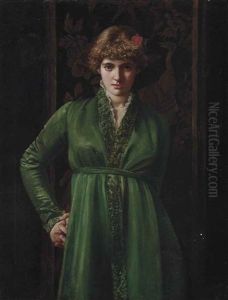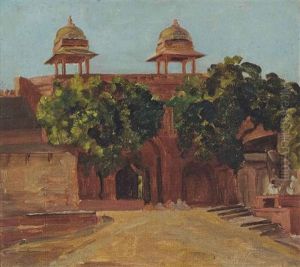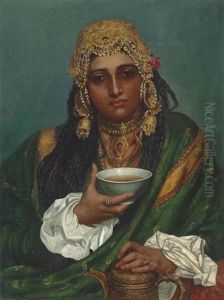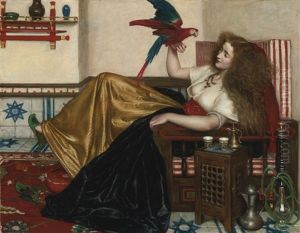Valentine Cameron Prinsep Paintings
Valentine Cameron Prinsep, often known simply as Val Prinsep, was a British painter of the Victorian era. Born on February 14, 1838, in Kolkata (then Calcutta), India, Prinsep hailed from a distinguished family with close ties to the cultural and artistic world. His father, Thoby Prinsep, was a civil servant, and his mother, Sara Monckton Pattle, was part of a social circle that included the famous photographer Julia Margaret Cameron, who was his aunt, and the writer Virginia Woolf, who was his cousin.
Prinsep's artistic inclinations were evident from an early age, and his family's connections allowed him to be in close proximity with prominent artists of the time. He initially studied law at the University of Oxford, but ultimately his passion for art prevailed, leading him to pursue a career in painting. He trained at the Government School of Design at South Kensington and later at the Royal Academy Schools in London. During his studies, Prinsep became associated with the Pre-Raphaelite Brotherhood, an influential group of English painters, poets, and art critics.
Under the guidance of Pre-Raphaelite artist Dante Gabriel Rossetti, Prinsep honed his skills and began to establish his reputation. He was particularly known for his historical and classical subjects, often characterized by rich coloration and elaborate composition. In addition to historical painting, Prinsep also painted portraits of many notable figures of his time.
Prinsep's works were exhibited at the Royal Academy and elsewhere, and he gained considerable success during his lifetime. He was also an active member of the art community, helping to establish the Arts Club in London and becoming a Royal Academician in 1894.
Valentine Cameron Prinsep's legacy includes not only his contributions to the art world but also his influence on the cultural milieu of his time. His paintings can be found in various art galleries and private collections. Prinsep passed away on November 4, 1904, in London, leaving behind a body of work that continues to be appreciated for its historical value and artistic merit.











